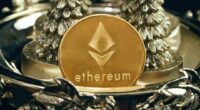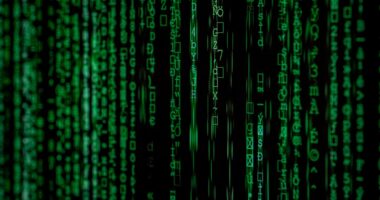NFTs, or non-fungible tokens, have taken the digital world by storm in recent years. These unique digital assets are built on the Ethereum blockchain, a decentralized platform that enables the creation and trading of NFTs. Unlike cryptocurrencies such as Bitcoin or Ethereum, which are fungible and can be exchanged on a one-to-one basis, NFTs are one-of-a-kind and cannot be replicated.
The importance of NFTs lies in their ability to provide proof of ownership and authenticity for digital assets. In a world where digital content can be easily copied and shared, NFTs offer a way to establish ownership and value for digital art, collectibles, virtual real estate, and more. This has opened up new opportunities for artists, creators, and collectors to monetize and trade their digital creations.
The popularity of NFTs has grown exponentially in recent years, with high-profile sales making headlines around the world. From digital art pieces selling for millions of dollars to virtual real estate transactions reaching record-breaking prices, NFTs have captured the attention of both mainstream media and the general public. As more people become aware of the potential value and utility of NFTs, the market is expected to continue its rapid growth.
Key Takeaways
- NFTs are unique digital assets that are stored on the Ethereum blockchain.
- Ethereum is a decentralized platform that allows developers to build and deploy smart contracts and decentralized applications.
- Ethereum is constantly evolving, with updates such as the upcoming Ethereum 2.0 release and the recent London hard fork.
- NFTs are created using smart contracts and can represent anything from digital art to virtual real estate.
- NFT marketplaces like OpenSea and Nifty Gateway are popular platforms for buying and selling NFTs, but it’s important to do your research and understand the risks before investing.
Understanding the Basics of Ethereum
To understand NFTs, it is important to have a basic understanding of Ethereum. Ethereum is a decentralized blockchain platform that enables the creation and execution of smart contracts. It was created by Vitalik Buterin in 2013 and launched in 2015.
Unlike Bitcoin, which was designed primarily as a digital currency, Ethereum was built to support a wide range of decentralized applications (dApps) beyond just financial transactions. It introduced the concept of smart contracts, which are self-executing contracts with the terms of the agreement directly written into code.
Ethereum works through a network of computers, known as nodes, that collectively maintain a copy of the blockchain. These nodes validate and record transactions, ensuring the security and integrity of the network. Ethereum’s native cryptocurrency is called Ether (ETH), which is used to pay for transaction fees and incentivize miners to secure the network.
Ethereum’s role in the NFT market is crucial. It provides the infrastructure and technology needed to create, trade, and store NFTs. NFTs are created as unique tokens on the Ethereum blockchain, with each token representing a specific digital asset. The Ethereum blockchain acts as a decentralized ledger that records the ownership and transaction history of these NFTs, ensuring their authenticity and provenance.
Latest Ethereum News and Updates
The Ethereum network is constantly evolving, with developers working on various updates and improvements to enhance its scalability, security, and functionality. Some recent developments in Ethereum technology include the implementation of Ethereum 2.0, which aims to transition the network from a proof-of-work (PoW) consensus mechanism to a more energy-efficient proof-of-stake (PoS) model.
Ethereum 2.0 will introduce several key changes, including the introduction of shard chains to improve scalability, the implementation of a new PoS consensus algorithm called Casper, and the introduction of eWASM, a new virtual machine that will enable faster and more efficient execution of smart contracts.
These updates are expected to have a significant impact on the NFT market. By improving scalability and reducing transaction fees, Ethereum 2.0 will make it easier for artists, creators, and collectors to create, trade, and interact with NFTs. It will also open up new possibilities for the integration of NFTs into other industries, such as gaming, virtual reality, and decentralized finance (DeFi).
What are NFTs and How Do They Work?
NFTs, or non-fungible tokens, are unique digital assets that are built on the Ethereum blockchain. Unlike cryptocurrencies such as Bitcoin or Ethereum, which are fungible and can be exchanged on a one-to-one basis, NFTs are one-of-a-kind and cannot be replicated.
NFTs differ from other cryptocurrencies in several ways. Firstly, each NFT has a unique identifier that distinguishes it from other tokens. This identifier is stored on the Ethereum blockchain, providing proof of ownership and authenticity for the digital asset represented by the NFT.
Secondly, NFTs can represent a wide range of digital assets, including artwork, music, videos, virtual real estate, virtual goods in video games, and more. These assets can be created by artists, musicians, game developers, or anyone else with digital content to sell.
Creating an NFT involves minting a new token on the Ethereum blockchain and attaching the digital asset to it. This process typically involves paying a transaction fee in Ether (ETH) to cover the cost of processing the transaction on the Ethereum network.
Once created, NFTs can be bought, sold, and traded on various NFT marketplaces. Each transaction is recorded on the Ethereum blockchain, ensuring the transparency and immutability of the ownership history.
NFT News and Trends to Watch Out For
The NFT market is constantly evolving, with new trends and developments emerging on a regular basis. One current trend in the NFT market is the rise of digital art as a valuable and collectible asset. Artists around the world are embracing NFTs as a way to monetize their digital creations and reach a global audience.
Digital art pieces have been selling for millions of dollars at auctions and on NFT marketplaces. This has sparked a debate about the value of digital art and its place in the traditional art world. Some argue that NFTs provide a new way for artists to monetize their work and gain recognition, while others question the environmental impact of NFTs and the speculative nature of the market.
In addition to the art world, NFTs have the potential to revolutionize other industries as well. For example, in the gaming industry, NFTs can be used to create and trade virtual goods, such as weapons, skins, and characters. This opens up new possibilities for gamers to own and monetize their in-game assets.
NFTs also have the potential to disrupt the music industry by enabling artists to sell their music directly to fans, without the need for intermediaries such as record labels or streaming platforms. This can provide artists with more control over their work and a greater share of the revenue generated from their music.
Top NFT Marketplaces to Explore

There are several popular NFT marketplaces where users can buy, sell, and trade NFTs. Each marketplace has its own unique features and fee structures, so it is important to do some research before getting started. Some of the top NFT marketplaces to explore include:
1. OpenSea: OpenSea is one of the largest NFT marketplaces, offering a wide range of digital assets, including art, collectibles, virtual real estate, and more. It allows users to create and sell their own NFTs, as well as buy from other creators.
2. Rarible: Rarible is a decentralized marketplace that allows users to create, buy, and sell NFTs. It uses a governance token called RARI, which gives holders voting rights and other benefits within the platform.
3. SuperRare: SuperRare is a curated marketplace for digital art. It focuses on high-quality, limited-edition artworks created by artists from around the world. Each artwork on SuperRare is unique and comes with a certificate of authenticity.
4. NBA Top Shot: NBA Top Shot is an officially licensed platform that allows users to collect and trade digital basketball highlights, known as “moments.” These moments are sold in packs or can be bought and sold individually on the marketplace.
When using these marketplaces, it is important to be aware of the fees involved. Most marketplaces charge a transaction fee for each sale, which is typically a percentage of the total sale price. It is also important to consider the reputation and security of the marketplace, as well as any additional features or benefits offered to users.
Navigating the Ethereum Ecosystem for NFTs
Navigating the Ethereum ecosystem can be overwhelming for newcomers, but there are several tools and resources available to help creators and buyers of NFTs. One of the key tools for interacting with the Ethereum blockchain is a digital wallet.
A digital wallet is a software application that allows users to securely store, send, and receive cryptocurrencies and NFTs. There are several popular wallets that support Ethereum and NFTs, including MetaMask, Trust Wallet, and MyEtherWallet.
Once you have a digital wallet set up, you can use it to connect to various dApps and NFT marketplaces. These platforms allow you to create, buy, and sell NFTs directly from your wallet. They also provide additional features such as browsing collections, discovering new artists, and participating in auctions or sales.
In addition to wallets and marketplaces, there are also several resources available for NFT creators and buyers. These include online communities, forums, and social media groups where users can connect with like-minded individuals, share their work, and learn from others.
Tips for Investing in NFTs on Ethereum
Investing in NFTs can be a lucrative opportunity, but it also comes with risks. Here are some factors to consider when investing in NFTs:
1. Do your research: Before investing in an NFT, it is important to research the artist or creator, the history of the asset, and the market demand for similar assets. Look for artists with a strong track record and a loyal following, as well as assets that have a unique value proposition or story.
2. Set a budget: It is easy to get caught up in the excitement of the NFT market and overspend on assets. Set a budget for your NFT investments and stick to it. Only invest what you can afford to lose, as the market can be volatile and unpredictable.
3. Diversify your portfolio: Just like with any investment, it is important to diversify your NFT portfolio. Invest in a variety of assets across different categories, such as art, collectibles, and virtual real estate. This can help mitigate risk and increase your chances of finding valuable assets.
4. Consider the long-term potential: While some NFTs may experience short-term hype and price spikes, it is important to consider the long-term potential of the asset. Look for assets that have a strong community, utility beyond just speculation, and a clear value proposition.
5. Stay informed: The NFT market is constantly evolving, with new trends and developments emerging on a regular basis. Stay informed about the latest news and updates in the NFT space to make informed investment decisions.
How to Create and Sell Your Own NFTs
Creating and selling your own NFTs can be a rewarding experience, both creatively and financially. Here is a step-by-step guide to creating NFTs on Ethereum:
1. Choose your digital asset: Decide what digital asset you want to turn into an NFT. This could be a piece of artwork, music, video, or any other digital content that you own the rights to.
2. Prepare your digital asset: Make sure your digital asset is in the appropriate format and meets the requirements of the NFT marketplace you plan to use. This may involve resizing images, converting files, or adding metadata to your asset.
3. Set up a digital wallet: Choose a digital wallet that supports Ethereum and NFTs, such as MetaMask or Trust Wallet. Set up your wallet and make sure you have enough Ether (ETH) to cover the transaction fees.
4. Choose an NFT marketplace: Research different NFT marketplaces and choose one that aligns with your goals and target audience. Some popular marketplaces include OpenSea, Rarible, and SuperRare.
5. Mint your NFT: Connect your digital wallet to the chosen marketplace and follow the instructions to mint your NFT. This typically involves uploading your digital asset, adding a title and description, setting a price or auction format, and paying the transaction fee.
6. Market and sell your NFT: Once your NFT is minted, it will be listed on the marketplace for others to discover and purchase. Promote your NFT through social media, online communities, and other marketing channels to increase visibility and attract potential buyers.
When selling NFTs, it is important to consider best practices for protecting your assets from theft and fraud. This includes using secure wallets, watermarking your digital assets, and being cautious of phishing attempts or scams.
The Future of NFTs and Ethereum
The future of NFTs and Ethereum is full of potential and opportunities. NFTs have already made a significant impact on the art world, providing artists with new ways to monetize their work and reach a global audience. As more industries embrace the concept of digital ownership and value, NFTs are expected to revolutionize various sectors, including gaming, music, virtual reality, and more.
However, there are also challenges and risks associated with NFTs and Ethereum. The market is still relatively new and volatile, with prices fluctuating rapidly and scams becoming more prevalent. It is important for investors and creators to approach the market with caution and do their due diligence before making any investments or transactions.
Looking ahead, the future of NFTs and Ethereum will likely be shaped by ongoing technological advancements, regulatory developments, and market trends. As Ethereum continues to evolve with updates such as Ethereum 2.0, the scalability and functionality of the network will improve, making it easier for creators and buyers to interact with NFTs.
Overall, NFTs have the potential to transform the way we think about ownership, value, and creativity in the digital world. Whether it’s through digital art, virtual real estate, or other digital assets, NFTs are opening up new possibilities for artists, creators, and collectors alike. As the market continues to grow and mature, it will be exciting to see how NFTs and Ethereum shape the future of the digital economy.
If you’re new to the world of NFTs and looking for a comprehensive guide to help you navigate the best channels, look no further than “Navigating the Best NFT Channels: A Comprehensive Guide for Beginners.” This informative article provides valuable insights and tips on how to get started in the NFT market. To further enhance your understanding, check out ETH News, a reliable source for all things Ethereum and blockchain-related. Their article “Hello World” offers a great introduction to the basics of Ethereum and its potential impact on various industries. Read more
FAQs
What are NFTs?
NFTs, or non-fungible tokens, are unique digital assets that are stored on a blockchain. They can represent anything from art to music to virtual real estate.
How do NFTs work?
NFTs are created using smart contracts on a blockchain, which ensures their authenticity and uniqueness. They can be bought and sold like any other asset, and their ownership is recorded on the blockchain.
What are some popular NFT marketplaces?
Some popular NFT marketplaces include OpenSea, Rarible, and SuperRare. Each marketplace has its own unique features and community.
How do I buy an NFT?
To buy an NFT, you will need to create a digital wallet and fund it with cryptocurrency. Then, you can browse NFT marketplaces and make a purchase using your wallet.
What are some tips for buying NFTs?
Some tips for buying NFTs include doing your research on the artist or creator, setting a budget, and being aware of the potential risks and volatility of the market.
What are some examples of successful NFT sales?
Some examples of successful NFT sales include Beeple’s “Everydays: The First 5000 Days” which sold for $69 million, and a digital artwork by artist Pak which sold for $16.8 million.






11 comments
Your words create magic! Experience more magic with Spunky‘s creative tools.
I am extremely inspired with your writing talents and also with the structure for your blog. Is this a paid topic or did you customize it yourself? Either way keep up the excellent high quality writing, it’s rare to peer a great blog like this one these days!
That immersive feeling in live dealer games is key – it’s like being right there! Thinking about themes, Boxing King really nails that adrenaline rush with its boxing focus. Check out Boxing King Login for a fun spin – the bonus features sound exciting! Great article!
Thanks for sharing. I read many of your blog posts, cool, your blog is very good.
Thank you for your sharing. I am worried that I lack creative ideas. It is your article that makes me full of hope. Thank you. But, I have a question, can you help me?
I don’t think the title of your article matches the content lol. Just kidding, mainly because I had some doubts after reading the article.
Can you be more specific about the content of your article? After reading it, I still have some doubts. Hope you can help me. https://www.binance.info/fr/register-person?ref=GJY4VW8W
Your article helped me a lot, is there any more related content? Thanks! binance norādījuma kods
I don’t think the title of your article matches the content lol. Just kidding, mainly because I had some doubts after reading the article.
Your point of view caught my eye and was very interesting. Thanks. I have a question for you.
I don’t think the title of your article matches the content lol. Just kidding, mainly because I had some doubts after reading the article.